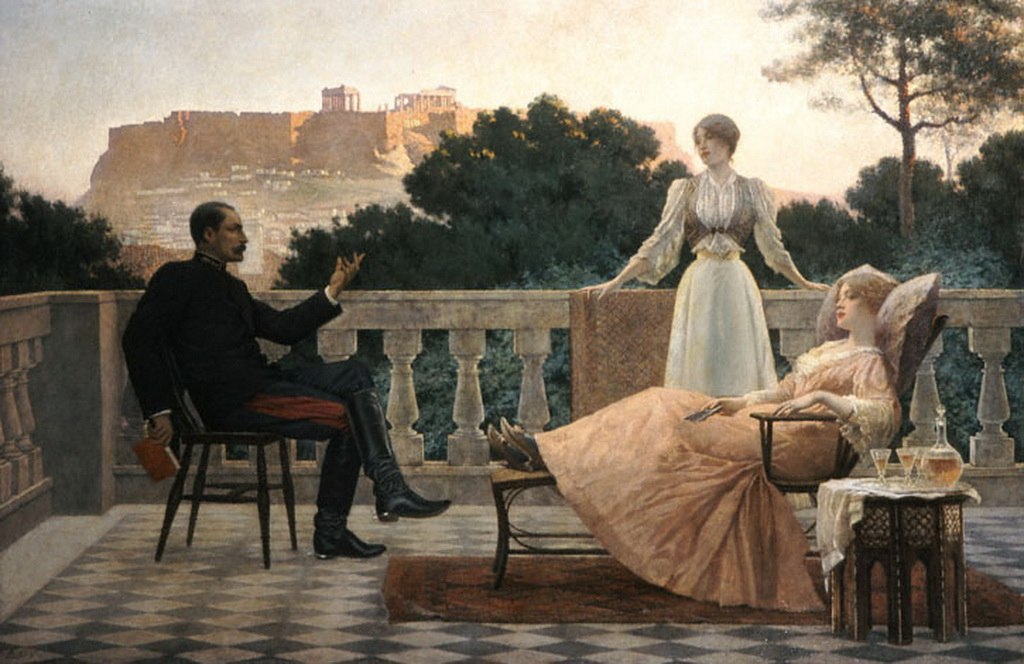It was in the town of Miletus, on the shores of the Aegean Sea, that an Ionian Greek named Thales (ca. 640-546 BC) first recorded his thoughts about the origin and nature of the universe. In so doing he became the first western philosopher.
No one really knows why philosophy began in ancient Greece, but it is interesting to note that it began not on mainland Greece but on the edges of the Greek world, where there was no doubt much mingling of different cultures and ideas.
What makes Thales unique is the fact that he sought to understand the world as a whole. He wanted to find a single basic substance or element from which everything is made.
Thales speculated that this single substance was water, and he said that everything (including the gods) was made from it. This way of thinking certainly has modern parallels since early in the twentieth century, scientists believed that everything originated from hydrogen, which when combined with oxygen forms water.
Thales no doubt noticed that although water normally exists in a liquid state, it can also exist as a solid and as a gas. This may have given him the idea that its liquid form is the basic ingredient from which everything else is made. He also thought that the earth itself floated in water.
Another thinker, also from Miletus, who lived during the same time as Thales, was Anaximander (ca. 611-547 BC), and he thought that the primary substance is a boundless, indefinite “Something,” taking as many different forms as the things we see. He believed that the earth was a cylinder, with a flat top and bottom, upon which people lived. This is the earliest theory that we possess which states that there is no true up and down.
Another thinker from Miletus, Anaximenes (ca. 590-525 BC) also wanted to know the basic element from which everything else is made. He said that this basic ingredient was air, which takes solid or liquid form when condensed, and gaseous form when rarified.
About the time of Anaximenes, just north of Miletus, in the city of Ephesus, another thinker named Heraclitus (ca. 540-470 BC) was saying that at the heart of all things there burns an eternal, all-consuming fire. He said that it was from this fire that everything else was created and it was to this fire that everything eventually returned. Heraclitus sometimes identified fire with “Logos,” or Universal Reason, as the law of change.
However, it was the speed of movement of physical fire that gave Heraclitus the bridge that he needed to the second part of his philosophy, which was that everything is in a state of perpetual flux. In his famous quotation, he stated that a person could not step into the same river twice, since it is not the same water both times.
The third part of Heraclitus’s philosophy was his belief that the change which is at the heart of things is always expressing itself in a struggle between opposites which, when they do come together, produce types of unity, and then dissolve again. This is very much like Hegel’s (1770-1831) much later theory of thesis + antithesis = synthesis.
The early theories of the universe are in a sense scientific as well as philosophic because they are hypotheses about the natural world. But these early thinkers had little or no conception of inductive methods of experiment and verification as they are used today.
Their search for a single substance probably sprang from a desire to find an underlying unity in life itself, which is one of the deepest desires of the human spirit. Moreover, the concepts in terms of which they thought were not the same as ours, of course.
Part of what makes the thought of any early epoch so very hard to understand is the subtle change that occurs in the meanings of concepts throughout the centuries.
However, these early Milesians and Ephesians prepared the ground upon which later great philosophers like Socrates, Aristotle and Plato would securely plant their own ideas, which would then germinate and grow into the vast tree that philosophy is today.
